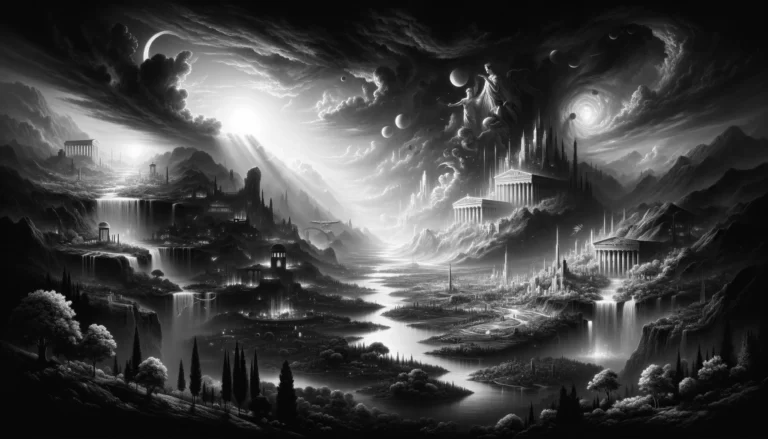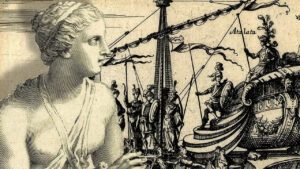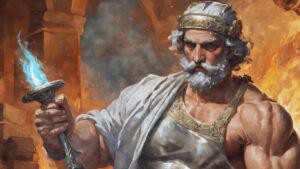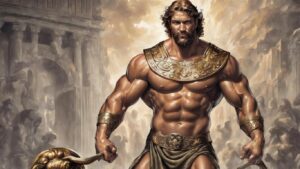Table of Contents
Hyperborea is a mythical and ancient Greek term referring to a legendary land located beyond the North Wind, often associated with extreme northern regions near the Arctic Circle.
Location
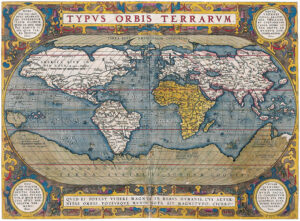
In ancient Greek mythology, Hyperborea’s exact location remains elusive, with various sources offering differing accounts. Transitioning to geographical interpretations, some scholars suggest Hyperborea could be linked to real northern regions near the Arctic Circle. However, historical evidence is scarce, and the myth’s nature often challenges attempts at pinpointing a concrete location. Transitioning to the myth’s symbolic significance, Hyperborea represents an idyllic and utopian land, embodying ideals of perpetual sunlight and divine favor. Despite the lack of concrete geographical evidence, the allure of Hyperborea endures as a mythical realm beyond the North Wind.
Mythological Features
Hyperborea, a mythical realm in Greek lore, boasts perpetual sunlight and utopian bliss. Transitioning to divine favor, gods supposedly smiled upon Hyperborea’s inhabitants. Yet, transitioning to ambiguity, accounts vary, leaving the exact nature and features of Hyperborea shrouded in mystery. Some myths suggest the sun never sets in Hyperborea, embodying an eternal day. Despite variations, the recurring theme of prosperity and divine connection persists in Hyperborea’s mythological features.
Associated Deities
Apollo, the Greek sun god, is often associated with Hyperborea. Transitioning to divine favor, he allegedly favored Hyperborean inhabitants. Additionally, Artemis, Apollo’s sister, is linked to the mythical land. Transitioning to mythic tales, some suggest Apollo sought refuge in Hyperborea after slaying the Python. Despite these connections, transitioning to variations, different accounts exist, adding layers to the myth’s complexity.
Cultural Significance
Hyperborea, a symbol of perfection, captivates with utopian allure. Transitioning to cultural significance, it embodies ideals of prosperity and bliss. However, transitioning to interpretations, its meaning varies across cultures, making it a subject of diverse perspectives. The myth of Hyperborea persists in literature, art, and thought, leaving an enduring mark on cultural narratives.
Variations in Mythology
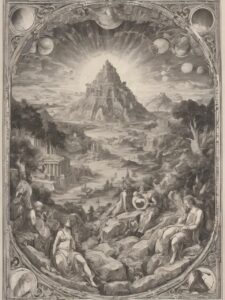
Different ancient Greek writers and poets provided varying accounts of Hyperborea, leading to inconsistencies and interpretations. The myth of Hyperborea is not uniform across all sources.
Homer’s “Odyssey”: In the “Odyssey,” Hyperborea is mentioned as a mythical and utopian land beyond the reach of the North Wind.
Herodotus’ Histories: Herodotus, the ancient Greek historian, refers to mythical realm in his work “Histories,” describing it as a land far to the north.
Pindar’s Odes: The ancient Greek poet Pindar makes references to Hyperborea in his odes, connecting it with the god Apollo.
Hesiod’s Works and Days: While not explicitly mentioned, the works of Hesiod sometimes touch upon the themes associated with Hyperborea, such as the concept of a distant and blessed land.
Later Classical Literature: mythical realm continues to appear in various later classical texts and references, often associated with the idea of an idyllic and distant realm.
Abaris the Healer
Abaris the Healer journeyed globally on a magical arrow, a symbol of Apollo. Without consuming food, he performed miracles. The arrow, once Apollo’s, hidden under a Hyperborean mountain, was found by Abaris. Healing body and soul through incantations, he was esteemed in Greece for his simplicity. Fleeing a plague in Hyperborea, Abaris learned healing, purifying Sparta, Knossos, and other cities. His reasoning and persuasion turned former tyrant Phalaris towards virtue after discussing divine matters. Abaris, donned in simple Scythian attire, read omens, predicted events through animal entrails, and found mention in the Scythian Oracles.
The Mortal Sons of Gods

Mortal children of the gods visited Hyperborea. Phaethon, aiming to prove his divine lineage, tried driving the sun chariot. Failing to control it, Zeus struck him down to prevent Earth’s scorching. In flames, Phaethon fell into the River Eridanos. His sisters, the Helidaes, transformed into amber-weeping poplar trees in grief. Phaethon’s friend Kyknos became a swan. Aging Hyperboreans leaped into the lake from Phaethon’s fall, turning into white swans in commemoration.
Perseus, Zeus’ son, journeyed to legendary land, seeking Nymphs guarding gods’ treasures. Entertained by Hyperboreans, he found the Graiai, who knew Medusa’s location. Heracles, Perseus’ descendant, also ventured to Hyperborea in search of Artemis‘ golden-horned deer. Returning for the golden apples of Hesperides and to find Atlas.
Hyperboreans are mentioned in the founding of the Olympic Games. Heracles, honoring Zeus, made a pilgrimage to Hyperborea, taking sacred wild olives for the shrine during the festival.
Appearance
Descriptions of Hyperborea in ancient Greek mythology remain elusive and vary, but common themes emerge:
Mythical realm, often described as a land where the sun never sets, signifies perpetual daylight.
It portrays a utopian realm characterized by prosperity, bliss, and divine favor, where inhabitants lead idealized lives.
A legendary land is closely associated with the gods, particularly Apollo and sometimes Artemis, with gods smiling upon its inhabitants.
Despite recurring themes, Hyperborea’s exact nature remains ambiguous and shrouded in mystery due to a lack of concrete details in ancient texts.
Hyperborea, beyond physical characteristics, holds symbolic significance, representing an unattainable and idealized place in the far north, often linked with divine favor and perfection.
Historical Interpretations
While Hyperborea is primarily a mythological concept, some scholars have attempted to connect it to historical or geographical locations, speculating about ancient civilizations in the far north.
FAQ
Why is Hyperborea significant in Greek mythology?
Hyperborea is significant for its symbolic representation of an idealized and unattainable place, linked with perpetual sunlight, divine connection, and prosperity.
Who are the inhabitants of Hyperborea?
The inhabitants of Hyperborea are often portrayed leading idealized lives and are associated with a close connection to the gods, including Apollo and sometimes Artemis.
What are the characteristics of Hyperborea?
Hyperborea is characterized by perpetual sunlight, utopian existence, divine connection, and an ambiguous, mysterious nature due to a lack of concrete details in ancient texts.
What gods are associated with Hyperborea?
Apollo, the sun god, and sometimes Artemis are associated with Hyperborea, with the gods believed to smile upon its inhabitants.
Is Hyperborea accessible to everyone in Greek mythology?
Hyperborea is often portrayed as a mythical and distant land not easily accessible to ordinary mortals. In some myths, only favored individuals or entities can enter.
How is Hyperborea linked to the Olympic Games?
Hyperborea is mentioned in the founding of the Olympic Games. Heracles, in honoring Zeus during a festival, made a pilgrimage to Hyperborea, taking sacred wild olives for the shrine.
What is the symbolic significance of Hyperborea?
Beyond its physical characteristics, Hyperborea symbolically represents an unattainable and idealized place associated with divine favor, perfection, and prosperity.
Why is Hyperborea considered mysterious?
The exact nature of Hyperborea remains ambiguous and mysterious due to the lack of concrete details in ancient texts, contributing to its enigmatic quality in Greek mythology.
